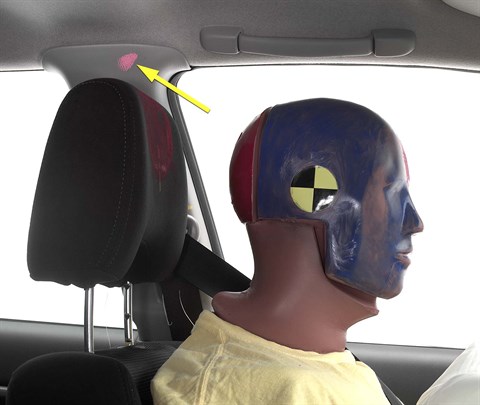Moderate overlap front: original test
Rating applies to 2005-06 models
Tested vehicle: 2002 Subaru Impreza 2.5 RS 4-door
The Subaru Impreza was redesigned for the 2002 model year. Imprezas manufactured after September 2001 include structural changes to improve occupant protection in frontal crashes (note: information about when a specific vehicle was manufactured is on the certification label typically affixed to the car on or near the driver door). The Saab 9-2X was introduced in the 2005 model year and discontinued after the 2006 model year.
The Insurance Institute for Highway Safety has evaluated the crashworthiness of an Impreza with the structural changes in a 40 mph frontal offset crash test into a deformable barrier.
The frontal offset crash test ratings also apply to the station wagon version of the Impreza, beginning with 2002 models manufactured after September 2001. The 9-2X was available only as a wagon.
| Evaluation criteria | Rating |
|---|---|
| Overall evaluation | |
| Structure and safety cage | |
| Driver injury measures | |
| Head/neck | |
| Chest | |
| Leg/foot, left | |
| Leg/foot, right | |
| Driver restraints and dummy kinematics | |

Action shot taken during the frontal offset crash test.

The dummy's position in relation to the steering wheel and instrument panel after the crash test indicates the driver's survival space was maintained well.

Smeared greasepaint indicates where the dummy's head brushed the B-pillar during rebound. Head acceleration from this hit was negligible.

There was little change in the position of the dummy's feet following the crash test. Injury risk was low.
Head restraints & seats
Seat type: All seats AHR
| Overall evaluation | |
|---|---|
| Dynamic rating | |
| Seat/head restraint geometry |
About the head restraint & seat test
Currently, IIHS tests apply only to front seats.